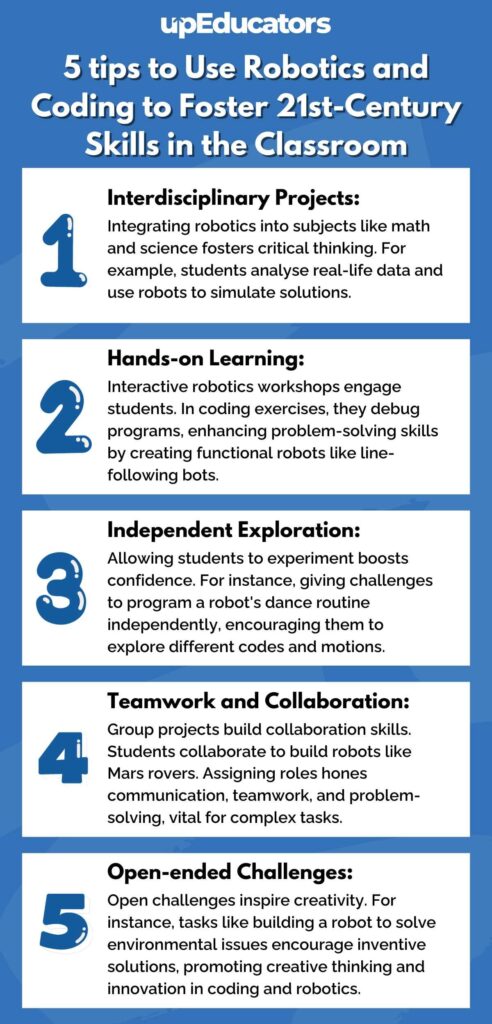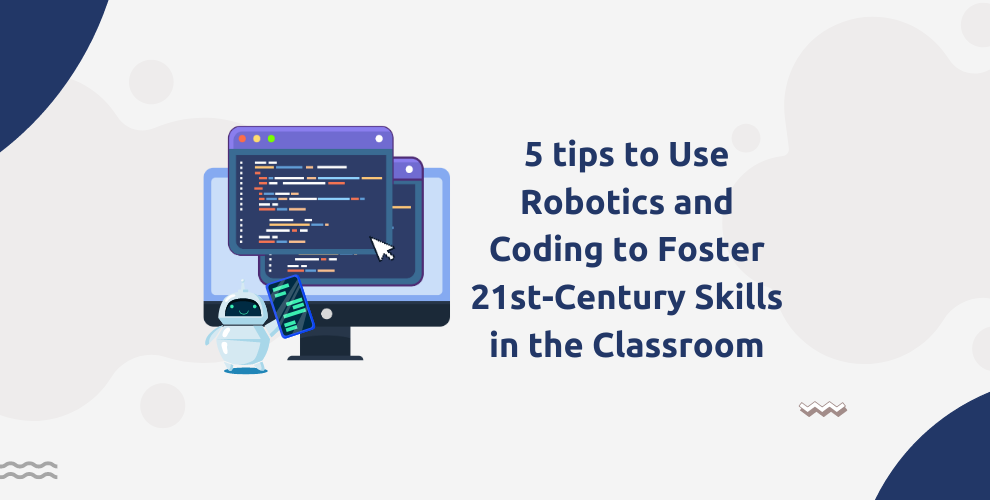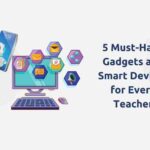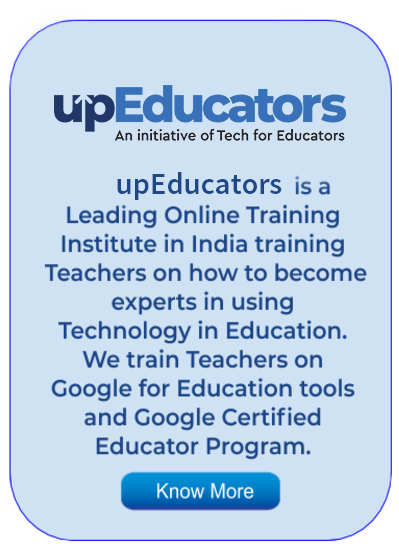Ms Preeti was an enthusiastic science teacher driven by a passion for empowering young minds. Her mission was to revolutionize how students embraced science, so she decided to introduce robotics and coding to her classroom. Eager to equip herself, Preeti embarked on a journey of learning, mastering the realms of robotics and coding through diligent training. Integrating these technologies into her lessons, she witnessed a remarkable transformation in her classroom.
With bright eyes and eagerness, her students delved into building robots, coding algorithms, and collaborating to solve real-world problems. Science, once intimidating, became an exciting journey for them. Preeti’s innovative approach garnered attention, inspiring fellow educators and winning the hearts of her students. Through her dedication to leveraging technology for education, she not only taught effectively but also nurtured a generation of curious minds eager to explore the boundless horizons of science and their own potential.
Robotics and Coding play a vital role in the modern-day classroom. But even the most skilled teachers are unable to implement and optimize the learning outcomes of these disciplines.

Hundreds of Teachers are trained by upEducators in using the power of Robotics and Coding in the classroom. And in this blog, we discuss the top 5 tips that every teacher can use to integrate Robotics and Coding in the 21st-century classroom.
Exploring how interdisciplinary projects can enhance critical thinking and problem-solving skills
By incorporating robotics and coding into interdisciplinary projects, teachers can encourage students to apply their knowledge and skills from various subjects to solve real-world problems collaboratively. As mentioned in the anecdote above, Ms Preeti infused her curriculum with interactive coding projects and hands-on robotics activities, sparking curiosity and excitement among her students. Through such projects, students had the opportunity to explore science, mathematics, technology, and even arts or social studies, fostering a deeper understanding of these subjects and their interconnectedness.
When students work on interdisciplinary robotics and coding projects, they are challenged to think critically and develop problem-solving abilities. For instance, in building robots to address environmental challenges, they must analyze data, devise algorithms, and strategize effectively. This multidisciplinary approach cultivates creativity and analytical thinking, preparing students for the complexities of the 21st century and empowering them to become adaptable, forward-thinking individuals.
Discussing the importance of hands-on, inquiry-based learning in robotics and coding
By allowing students to actively engage with robotics kits and coding platforms, they can explore concepts through direct experience and experimentation.
Encouraging students to inquire and explore fosters a deeper understanding of concepts and nurtures their problem-solving skills. Through inquiry-based learning, students are motivated to ask questions, investigate, and seek solutions, promoting critical thinking and creativity. Ms Preeti’s students in the story sparkled with curiosity and excitement as they built robots and programmed algorithms.
This approach instills a growth mindset, as students learn from their mistakes, iterate their designs, and overcome challenges. It nurtures resilience and perseverance, vital traits in the 21st century where adaptability and continuous learning are crucial. Hands-on, inquiry-based learning in robotics and coding empowers students to become active learners and prepares them to tackle complex real-world issues with confidence.
Encouraging students to explore and experiment with robotics and coding concepts independently
Teachers can inspire students to take ownership of their learning by encouraging independent exploration and experimentation with robotics and coding concepts. As mentioned in the previous points, hands-on, inquiry-based learning plays a crucial role in fostering 21st-century skills. Ms Preeti’s classroom in the introduction story exemplified this approach, as she allowed her students to brainstorm their ideas and work collaboratively to solve real-world problems using robotics and coding.
By giving students the freedom to explore, experiment, and create on their own, teachers empower them to develop critical thinking and problem-solving skills organically. Preeti stood back and listened, allowing her students to actively participate in the discussion and share their insights. This approach nurtures students’ creativity and resourcefulness as they navigate through challenges and devise innovative solutions.
Encouraging independent exploration also cultivates a sense of ownership and responsibility in students, as they become active learners rather than passive recipients of information.
Strategies for fostering teamwork, communication, and effective collaboration among students
Group robotics and coding projects require students to collaborate, listen to each other’s perspectives, and collectively problem-solve. This fosters a sense of community and mutual respect among students, as they learn to value each other’s contributions. Through collaborative efforts, students develop effective communication skills, learning to express their ideas clearly and actively listen to their peers.
Furthermore, working in teams teaches students the importance of delegation, time management, and division of tasks, essential skills in the 21st-century workplace. Ms Preeti’s students in the introduction story engaged in discussions led by a designated student, promoting leadership skills and a shared sense of responsibility within the group.
By emphasizing teamwork, communication, and collaboration in robotics and coding activities, teachers equip students with essential interpersonal skills that are vital for success in the modern world. These skills go beyond the classroom and prepare students to work harmoniously in diverse environments, contributing to a more cohesive and productive society.
Promoting open-ended challenges and opportunities for students to think creatively and devise unique solutions
Open-ended challenges empower students to think outside the box, apply critical thinking, and exercise their creativity. By presenting real-world problems with no predefined solution, students are encouraged to innovate and explore various approaches. Preeti’s students, in the introduction story, built robots and programmed algorithms to address environmental challenges, which required them to think creatively and devise original solutions.
Through open-ended challenges, students also develop resilience and perseverance, as they encounter obstacles and setbacks while seeking solutions.
By promoting open-ended challenges, teachers instil a sense of curiosity and discovery in students, fostering a love for learning and a drive for exploration. This approach prepares students to adapt to the dynamic challenges of the 21st century and equips them with the ability to think critically.
Harnessing the power of robotics and coding in the classroom can significantly enhance 21st-century skills among students. By following the five tips outlined above, teachers can create a dynamic and engaging learning environment that fosters critical thinking, problem-solving, collaboration, communication, and creativity. If you are a teacher who wants to learn and teach robotics, then the Coding and AI course by upEducators and STEM Robotics course by upEducators are the right choices for you. These courses will help you understand and teach these topics and subjects better.
Author: This article is written by Samiya Rashid for upEducators blog.




